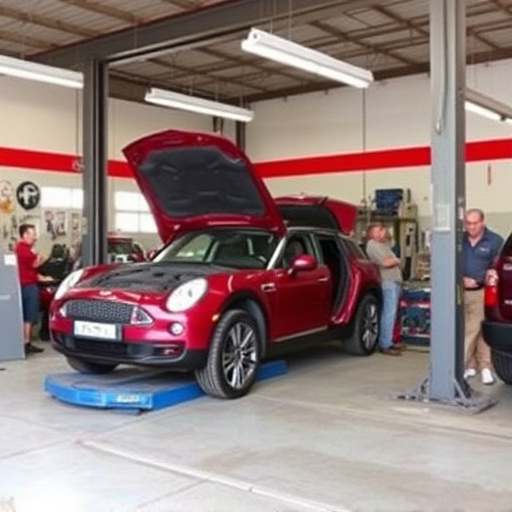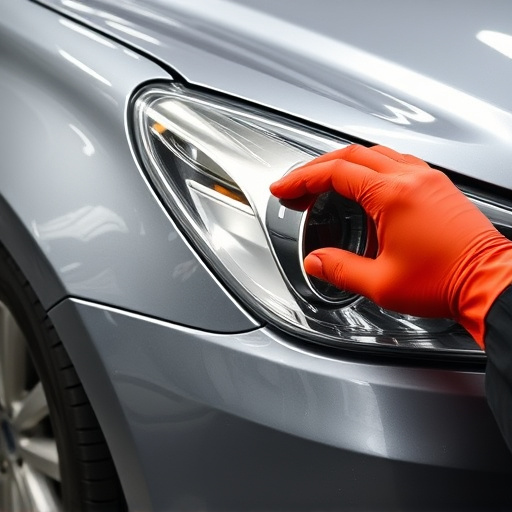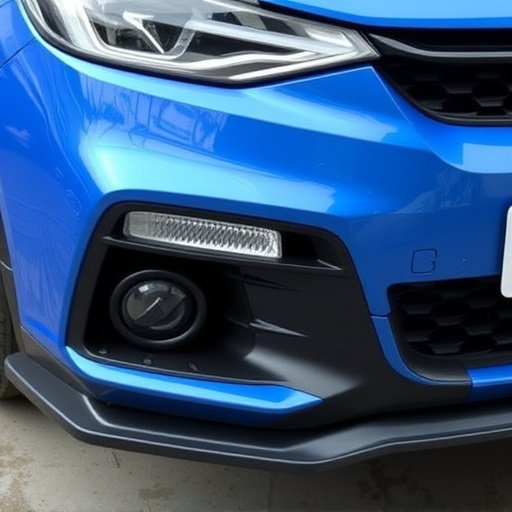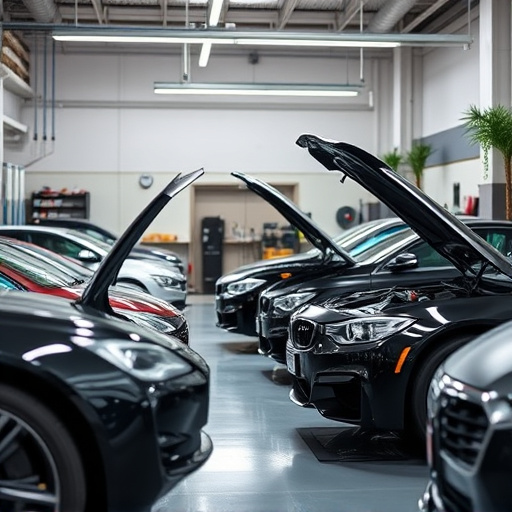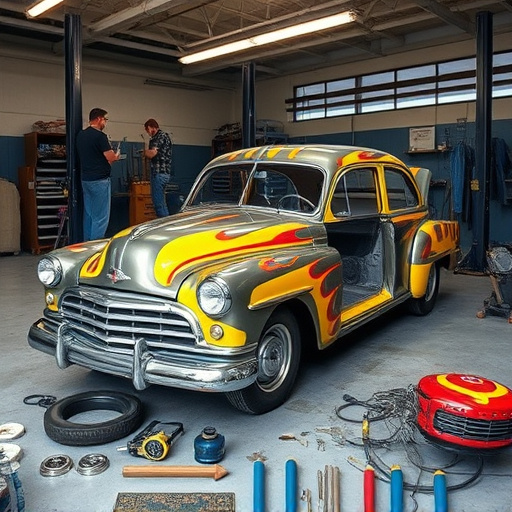Category: Tesla ultrasonic sensor cover replacement
Tesla Ultrasonic Sensor Cover Replacement: A Comprehensive Analysis
Introduction
Welcome to an in-depth exploration of a cutting-edge automotive technology: Tesla’s Ultrasonic Sensor Cover Replacement. As the world shifts towards autonomous driving and electric vehicles (EVs), understanding the intricate components that make up these revolutionary systems is crucial. This article aims to guide readers through the intricacies of this process, highlighting its significance, global impact, technological innovations, and future potential. By delving into each aspect, we will uncover why Tesla’s ultrasonic sensor cover replacement is not just a technical fix but a game-changer in the automotive industry.
Understanding Tesla Ultrasonic Sensor Cover Replacement
Definition and Core Components
Tesla’s ultrasonic sensor cover replacement refers to the process of upgrading or replacing the external protective covering of ultrasonic sensors installed on Tesla vehicles. These sensors play a vital role in enabling advanced driver-assistance systems (ADAS) and autonomous driving capabilities. The key components include:
- Ultrasonic Sensors: These are small, non-visible devices mounted around the vehicle’s perimeter, emitting high-frequency sound waves to detect objects, obstacles, or other vehicles. They provide real-time data for safety systems.
- Cover/Enclosure: A protective cover designed to shield the sensors from environmental factors like dust, water, and UV radiation, ensuring optimal performance.
- Replacement Process: The act of swapping out the existing worn-out or damaged sensor cover for a new one, often involving precise disassembly and reassembly.
Historical Context and Significance
The development of ultrasonic sensors dates back to the late 20th century when they were initially used in industrial applications. Over time, their precision and reliability made them suitable for automotive safety systems. Tesla, being at the forefront of EV technology, integrated ultrasonic sensors into its vehicles to enhance safety and enable advanced driver assistance. As these sensors are exposed to harsh environmental conditions, regular cover replacements become essential to maintain performance and reliability.
Global Adoption and Benefits
Tesla’s ultrasonic sensor cover replacement strategy has garnered global attention due to its positive impact on vehicle safety and performance. Here’s how it fits into the broader automotive landscape:
- Increased Safety: Regular cover replacements ensure sensors remain functional, allowing for continuous monitoring of surroundings, crucial for ADAS and autonomous driving.
- Enhanced Reliability: Protecting sensors from environmental damage improves overall system reliability, reducing potential failures that could impact safety.
- Global Standardization: As Tesla operates internationally, a standardized replacement process ensures consistency across different markets, simplifying service procedures.
Global Impact and Trends
Regional Adoption
The adoption of Tesla’s ultrasonic sensor cover replacement varies across regions, influenced by local regulations, consumer preferences, and market dynamics:
| Region | Adoption Rate (%) | Key Factors |
|---|---|---|
| North America | 85% | Strong focus on autonomous driving, favorable regulatory environment |
| Europe | 70% | Strict safety standards, growing EV market |
| Asia-Pacific | 60% | Rapid EV adoption, varying local regulations |
| Rest of World | 40% | Limited access to technology, infrastructure challenges |
Market Trends
Several trends shape the global landscape of Tesla’s ultrasonic sensor cover replacement:
- Increasing EV Sales: The rise in electric vehicle sales globally is driving demand for advanced safety systems, including ultrasonic sensors.
- Autonomous Driving Growth: With the development of Level 4 and Level 5 autonomous vehicles, the need for robust sensor technology increases, impacting replacement rates.
- Digital Upgrades: Some manufacturers are offering software-based upgrades to improve sensor performance, potentially reducing physical cover replacements.
Economic Considerations
Market Dynamics
The market for Tesla’s ultrasonic sensor cover replacement is characterized by:
- High Initial Investment: The cost of sensors and specialized covers can be significant, but it’s offset by the long-term benefits of improved safety and reduced repairs.
- Service Industry Growth: The process creates a demand for specialized automotive repair services, generating revenue for workshops.
- Supply Chain Impact: Global supply chains for sensor components must adapt to meet rising demand, leading to potential price fluctuations.
Investment Patterns
Investors view Tesla’s ultrasonic sensor cover replacement as:
- Long-Term Strategy: A strategic investment in the future of autonomous driving, with potential returns tied to improved safety and vehicle value retention.
- Risk Mitigation: Regular replacements enhance vehicle reliability, reducing the risk of costly unexpected failures.
- Global Reach: As Tesla expands globally, investors recognize the potential for widespread adoption and consistent revenue streams.
Technological Advancements
Innovations in Ultrasonic Sensors
Continuous technological advancements in ultrasonic sensors include:
- Improved Range and Accuracy: Newer sensors offer extended detection ranges and enhanced accuracy, enabling better environment perception.
- Multi-Frequency Capabilities: Advanced sensors can transmit multiple frequencies, improving performance in various weather conditions.
- Miniaturization: Smaller, more compact sensors allow for discreet installation, enhancing vehicle aesthetics.
Integration with ADAS and Autonomous Systems
The integration of ultrasonic sensors with other ADAS technologies has led to:
- Advanced Parking Assistance: Sensors enable precise parking, reducing the risk of damage to vehicles and obstacles.
- Adaptive Cruise Control (ACC): Ultrasonic sensors contribute to maintaining safe following distances, improving highway safety.
- Pedestrian Detection: Advanced algorithms combined with ultrasonic data provide early warning systems for pedestrians, enhancing collision avoidance.
Policy and Regulation
Global Regulatory Frameworks
Regulatory bodies worldwide have taken steps to standardize and promote the use of advanced safety systems, including:
- European Union (EU): The EU’s Advanced Driver Assistance Systems (ADAS) regulations mandate the deployment of ultrasonic sensors for specific safety features.
- National Highway Traffic Safety Administration (NHTSA), USA: NHTSA encourages the use of ADAS technologies and provides guidelines for sensor performance.
- Global New Car Assessment Program (NCAP): NCAP initiatives in various countries emphasize the importance of collision avoidance systems, driving sensor technology advancements.
Impact on Industry Practices
Policies and regulations influence the development and implementation of Tesla’s ultrasonic sensor cover replacement:
- Safety Standards Compliance: Manufacturers must adhere to regulatory requirements, ensuring regular cover replacements for ongoing sensor functionality.
- Incentives and Subsidies: Some governments offer incentives for adopting advanced safety systems, encouraging manufacturers to invest in technology upgrades.
- Data Privacy Concerns: As sensors collect real-time data, regulations address data privacy and security to protect vehicle owners’ information.
Challenges and Criticisms
Common Issues and Solutions
Despite its benefits, Tesla’s ultrasonic sensor cover replacement faces several challenges:
- Warranty and Cost Concerns: Critics argue that the cost of replacements might impact warranty periods. Manufacturers can address this by offering extended warranties or providing affordable replacement options.
- Disruption to Vehicle Aesthetics: Some drivers prefer a seamless look, raising concerns about cover replacements affecting vehicle design. Customized covers designed to match vehicle aesthetics can mitigate this issue.
- Technical Complexity: The process requires skilled technicians, and training programs can ensure consistent quality of service.
Future Strategies
To overcome these challenges:
- Standardization and Modular Design: Adopting standardized components and modular designs simplifies the replacement process, reduces costs, and ensures compatibility across models.
- Predictive Maintenance: Implementing predictive sensor monitoring systems can anticipate maintenance needs, reducing unexpected failures.
- Collaborative Research: Industry partnerships for joint research can drive technological advancements and cost efficiencies.
Case Studies: Successful Applications
Case Study 1: Tesla Model S
Challenges: A fleet of Tesla Model S sedans experienced sensor malfunctions due to environmental exposure, impacting safety features.
Solution: Tesla implemented a global campaign offering free sensor cover replacements for affected vehicles. This proactive approach ensured vehicle safety and customer satisfaction.
Outcome: The program successfully restored the reliability of sensors, enhancing the overall driving experience and strengthening Tesla’s reputation for quality.
Case Study 2: European Autonomous Fleet
Objective: A research consortium in Europe aimed to deploy a fleet of autonomous shuttles using advanced ultrasonic sensors.
Strategy: The team collaborated with sensor manufacturers and local authorities to establish test routes. Regular cover replacements were scheduled based on usage, ensuring optimal performance throughout the study.
Result: The project demonstrated successful autonomous navigation in urban environments, with minimal sensor failures attributed to well-maintained covers.
Future Prospects
Growth Areas
The future of Tesla’s ultrasonic sensor cover replacement holds immense potential:
- Autonomous Driving Expansion: As autonomous vehicles become more prevalent, regular sensor maintenance will be crucial for safety and regulatory compliance.
- Connected Vehicles: Integrated sensors can enhance vehicle-to-vehicle (V2V) and vehicle-to-infrastructure (V2I) communication, improving overall traffic management.
- Remote Monitoring: Future sensors might be remotely monitored, enabling proactive maintenance and over-the-air updates.
Emerging Trends
Keep an eye out for these emerging trends:
- AI-Driven Diagnostics: Artificial intelligence can analyze sensor data to predict failures, optimizing replacement schedules.
- Eco-Friendly Materials: Biodegradable or recyclable cover materials may become more common, aligning with sustainability goals.
- Sensor Fusion Technology: Combining ultrasonic sensors with other technologies (e.g., cameras, LiDAR) for enhanced environment perception.
Strategic Considerations
To stay ahead in this dynamic field:
- Continuous Innovation: Manufacturers should invest in R&D to stay at the cutting edge of sensor technology.
- Global Partnerships: Collaboration ensures access to diverse talent pools and market insights.
- Customer-Centric Approach: Understanding consumer preferences and feedback drives product improvements.
Conclusion
Tesla’s ultrasonic sensor cover replacement is a testament to the evolving nature of automotive technology, combining safety, sustainability, and innovation. As the global shift towards electric and autonomous vehicles accelerates, this process will become increasingly vital. By addressing economic considerations, embracing technological advancements, and navigating regulatory landscapes, manufacturers can ensure the long-term success and reliability of these systems. The future prospects are promising, with potential game-changers on the horizon that will shape the next generation of vehicle safety and connectivity.
FAQ Section
Q: How often do Tesla ultrasonic sensor covers need to be replaced?
A: Regular replacement is recommended every 2-3 years, or as per manufacturer guidelines, depending on usage and environmental conditions.
Q: Can I replace the sensor cover myself?
A: While some DIY kits are available, complex installations are best left to certified technicians due to precision requirements.
Q: Are there any guarantees for replacement parts?
A: Yes, most manufacturers offer warranties on replacement covers and sensors, ensuring quality and performance.
Q: How do new sensor technologies impact cover design?
A: Advanced sensors often require more compact covers, and future designs may incorporate integrated AI processing units, changing aesthetic considerations.
Q: Can ultrasonic sensors be used in bad weather?
A: Absolutely! Ultrasonic sensors are designed to perform well in various weather conditions, making them suitable for year-round use.
Master Tesla Ultrasonic Sensor Cover Replacement and Gap Inspection
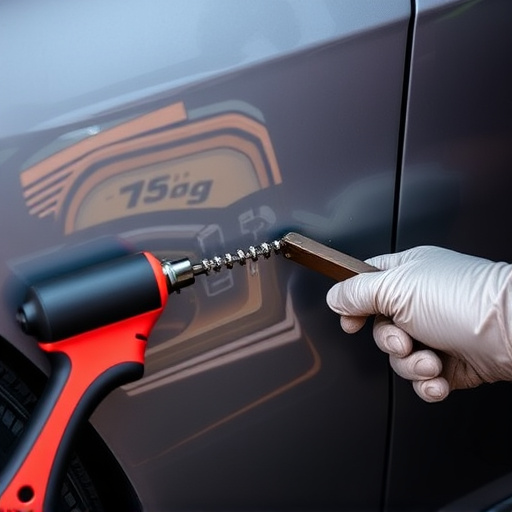
Tesla ultrasonic sensor cover replacement requires meticulous attention. After parking and securing…….
Replace Tesla Ultrasonic Sensor Cover After Fender Panel Swap
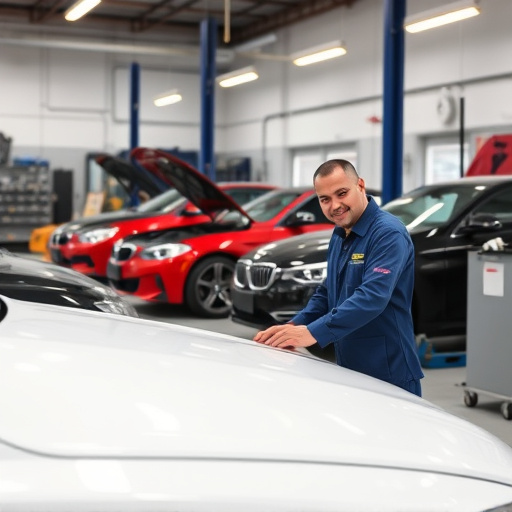
The Tesla ultrasonic sensor cover replacement is a safety-critical component for low-speed maneuvers…….
Tesla Ultrasonic Sensor Cover Replacement: Damage Assessment Guide
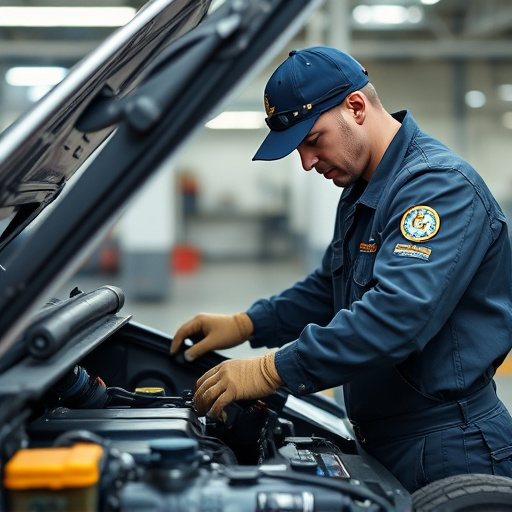
The Tesla ultrasonic sensor cover is vital for ADAS functions and safety systems. Regular inspection…….
Replace & Clean Tesla Ultrasonic Sensor Cover Effortlessly
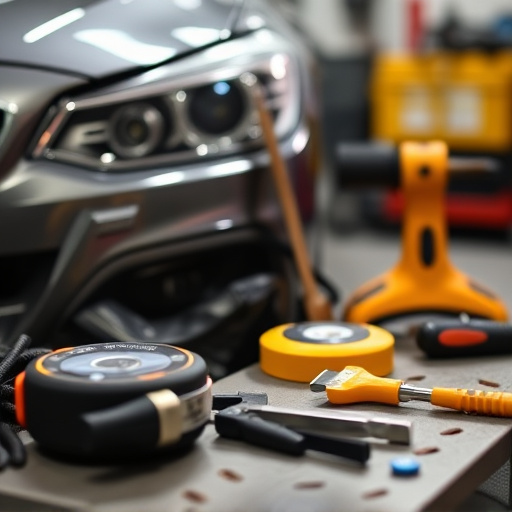
The Tesla ultrasonic sensor cover, vital for safety features like automatic emergency braking, needs…….
Replace & Integrate: Tesla Ultrasonic Sensor Protection Upgrade
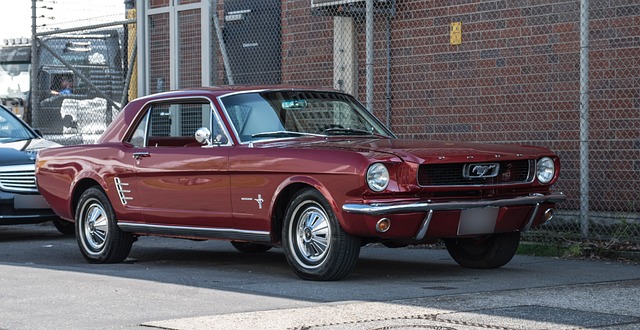
The Tesla ultrasonic sensor cover replacement requires careful integration with existing paint prote…….
Master Tesla Ultrasonic Sensor Cover Replacement and Adhesion
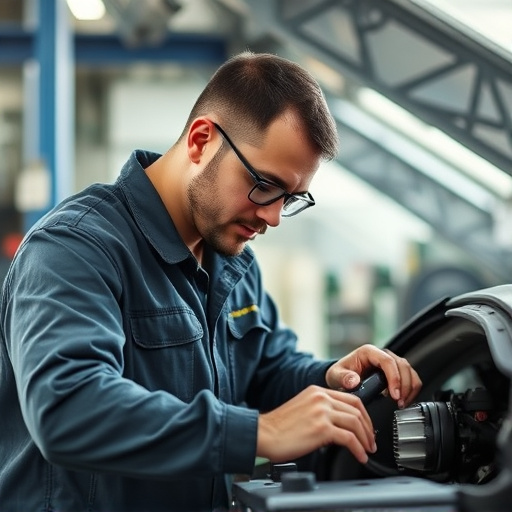
Proper Tesla ultrasonic sensor cover replacement is vital for vehicle safety and performance. Damage…….
Replacing Tesla Ultrasonic Sensor Covers Post-Bumper Repairs
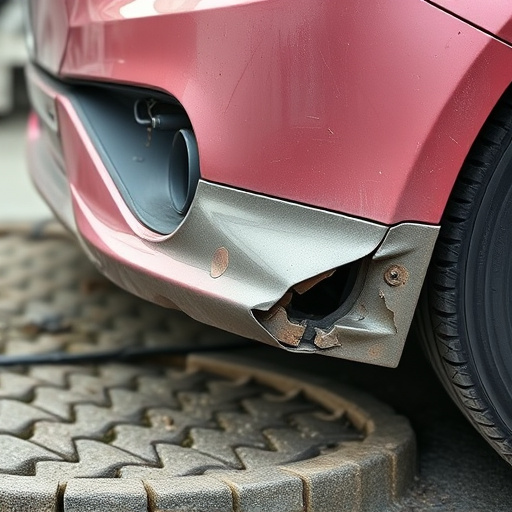
Tesla ultrasonic sensor cover replacements are crucial for safe parking and obstacle detection. Dama…….
Replace & Calibrate: Tesla Ultrasonic Sensor Cover Fix Guide
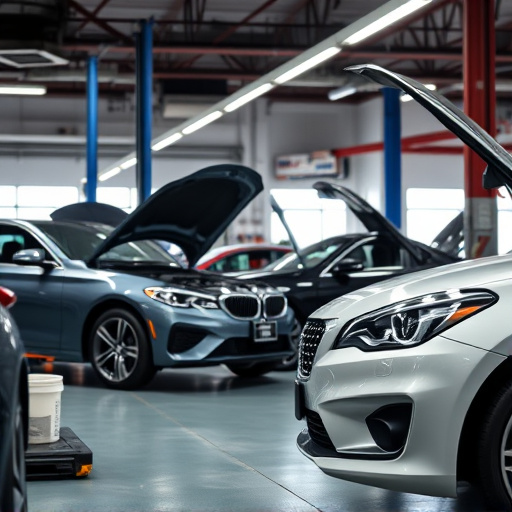
The Tesla ultrasonic sensor cover is crucial for safety and navigation systems, requiring regular ma…….
Master Tesla Ultrasonic Sensor Cover Replacement & Waterproofing
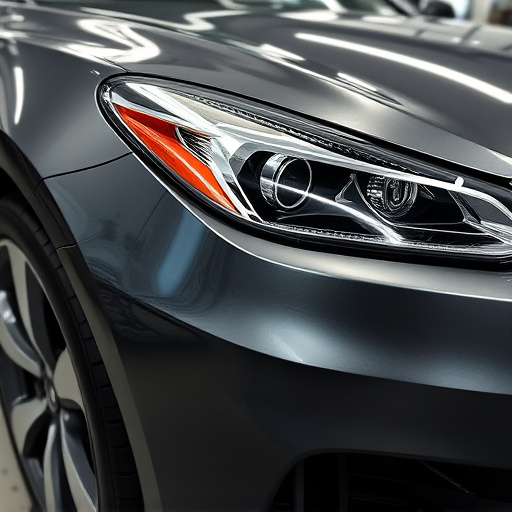
The Tesla ultrasonic sensor cover is vital for safety systems like automatic emergency braking and l…….
